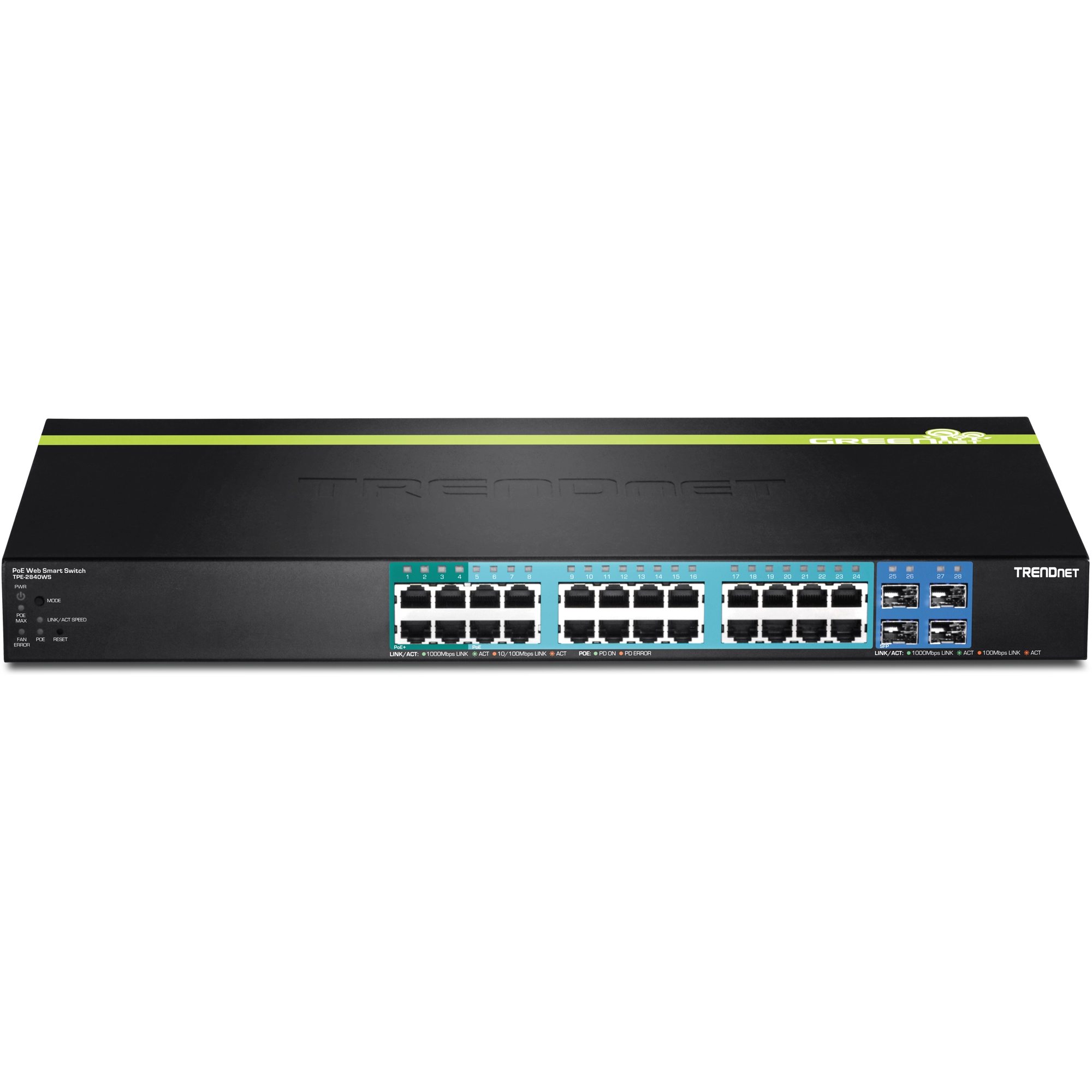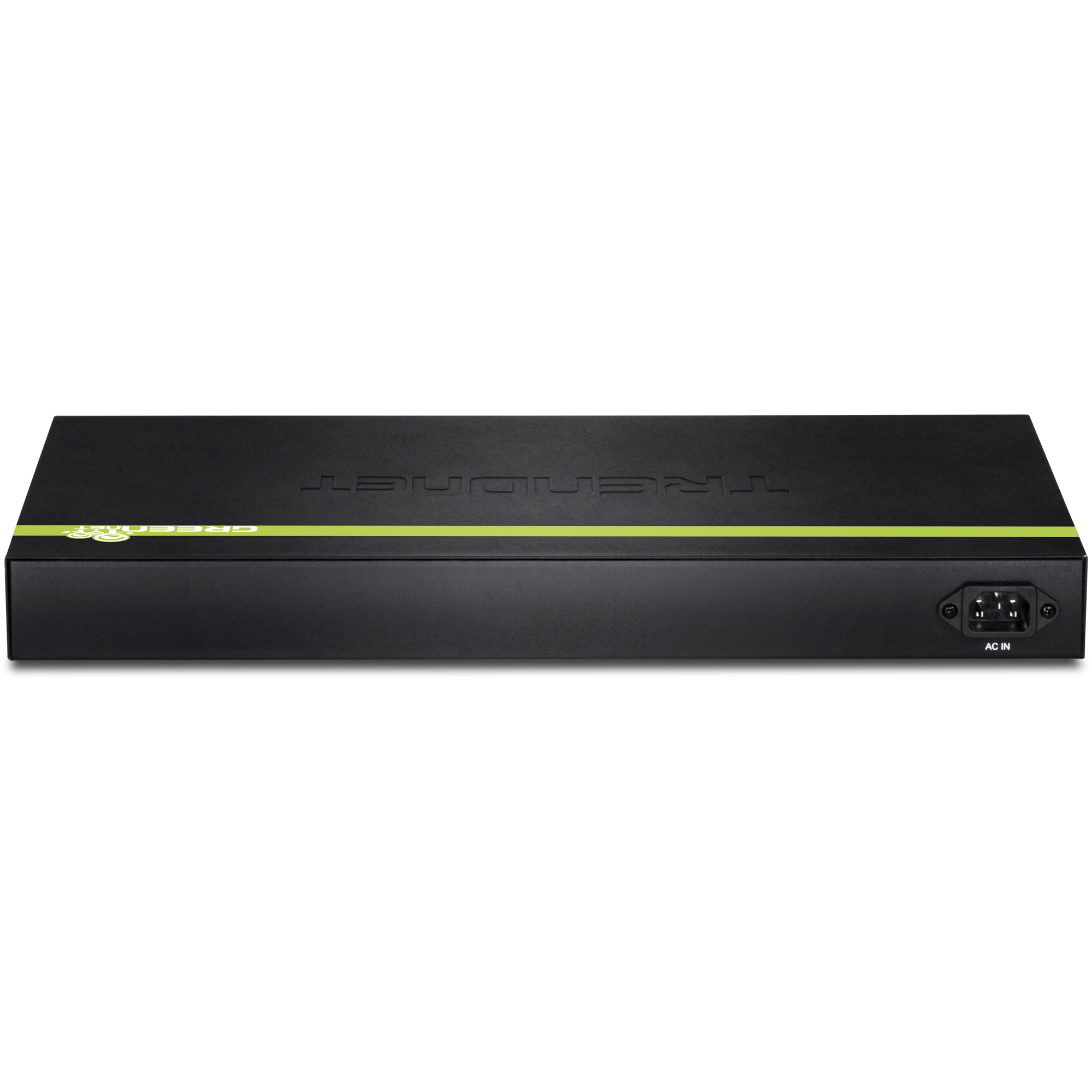28-Port Gigabit Web Smart PoE+ Switch
TPE-2840WS (Version v1.0R)
- 4 x Gigabit PoE+ ports
- 20 x Gigabit PoE ports
- 4 x SFP slots
- 185 Watt PoE budget
- 56 Gbps switching capacity
- Private/Voice VLAN, QoS, and bandwidth controls
- Smart fans reduce energy consumption
- Rack mount brackets included
- Lifetime Warranty*
TRENDnet's 28-Port Gigabit Web Smart PoE+ Switch, model TPE-2840WS, offers 4 x Gigabit PoE+ ports (Ports 1-4 802.3at), 20 x Gigabit PoE ports (Ports 5-24 802.3af), 4 x SFP slots, and a PoE Power budget of 185 Watts. This IPv6 ready switch offers advanced traffic management, troubleshooting, access control, energy saving GREENnet, and monitoring features at a reduced cost.
.jpg)
Hardware Design
Provides 4 x Gigabit PoE+ ports (Ports 1-4 802.3at), 20 x Gigabit PoE ports (Ports 5-24 802.3af), 4 x SFP slots, a PoE Power budget of 185 Watts, and includes rackmount brackets.
Smart Fan
Smart fan saves energy by varying fan speed and use based on cooling needs.
IPv6 Ready
This switch supports IPv6 configuration and IPv6 neighbor discovery.
Traffic Management
A broad range of network configurations are supported by: 802.3ad link aggregation, Asymmetric VLAN, 802.1Q VLAN, Voice VLAN, Private VLAN, Bandwidth Controls, GVRP, IGMP v1-v3, 802.1p Class of Service (CoS), Spanning Tree (STP, RSTP, and MSTP), and QoS queue scheduling.
Troubleshooting
Real time traffic comparison charts, error group charts, and a convenient cable diagnostic test aid in rapid troubleshooting.
Access Controls
Features such as ACL, SSL, MAC/port filtering, Denial of Service controls, 802.1X, TACACS+, and RADIUS are compatible with layered network access controls.
Monitoring
RMON, SNMP, SNMP Trap, and Port Mirroring support administrator monitoring solutions.
| Standards |
|
| Device Interface |
|
| Data Transfer Rate |
|
| Performance |
|
| Management |
|
| MIB |
|
| Spanning Tree |
|
| Link Aggregation |
|
| Quality of Service (QoS) |
|
| VLAN |
|
| Multicast |
|
| Port Mirror |
|
| Access Control |
|
| Compatibility |
|
| Special Features |
|
| Power |
|
| PoE |
|
| Fan/Acoustics |
|
| MTBF |
|
| Operating Temperature |
|
| Operating Humidity |
|
| Dimensions |
|
| Weight |
|
| Certifications |
|
| Warranty |
PACKAGE CONTENTS |
|
DIY: Using PoE Technology to Install IP Cameras




